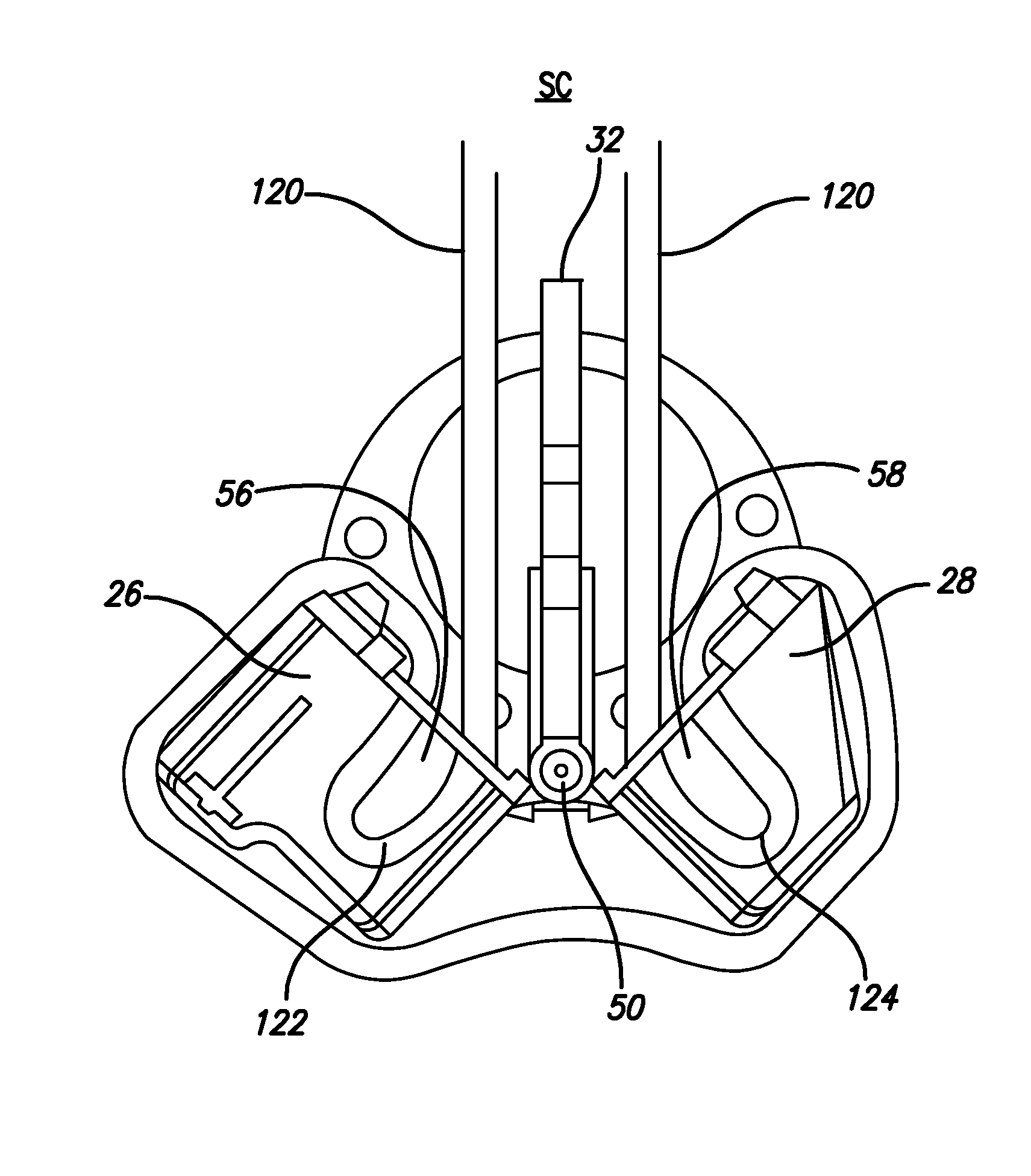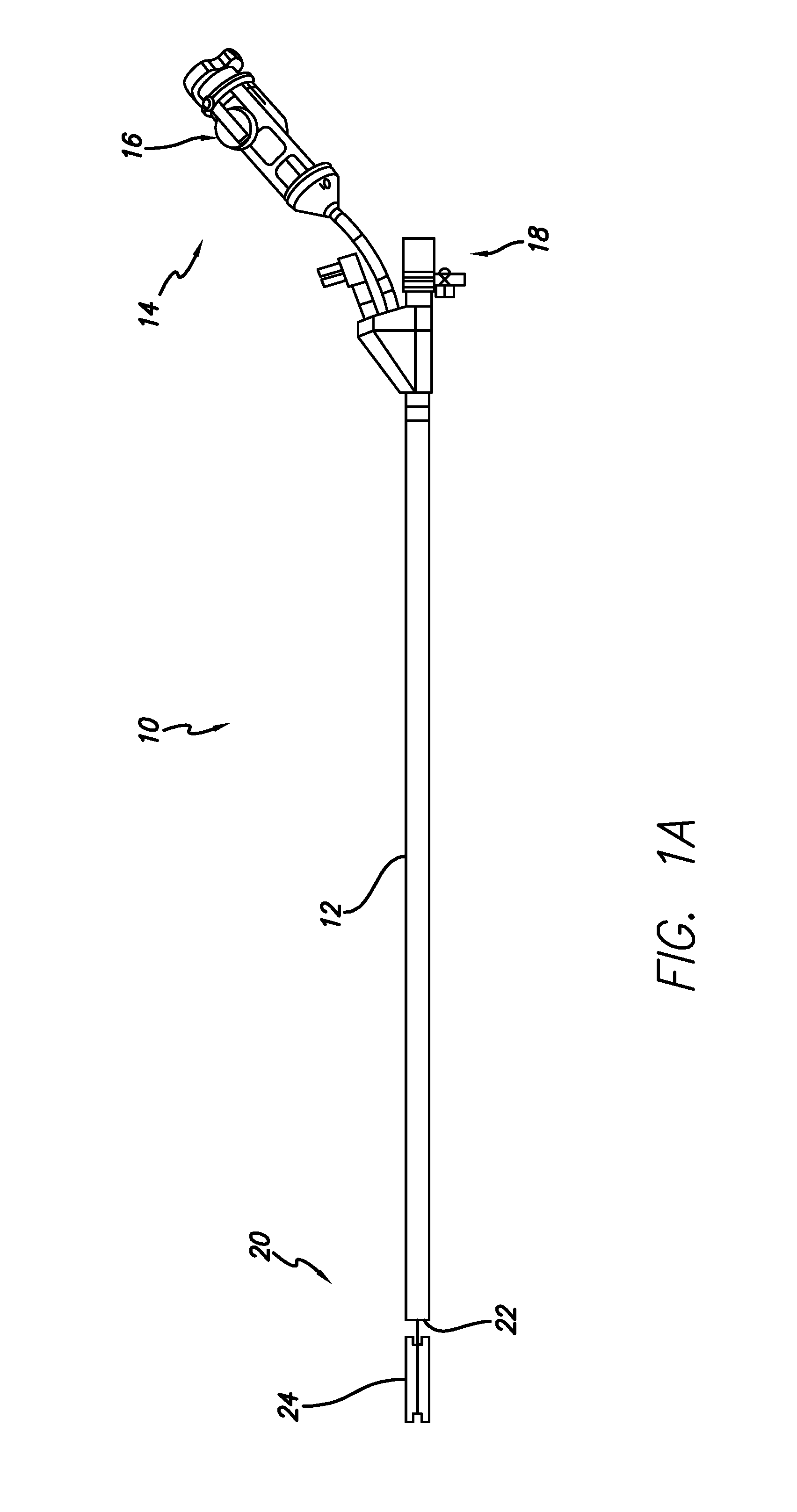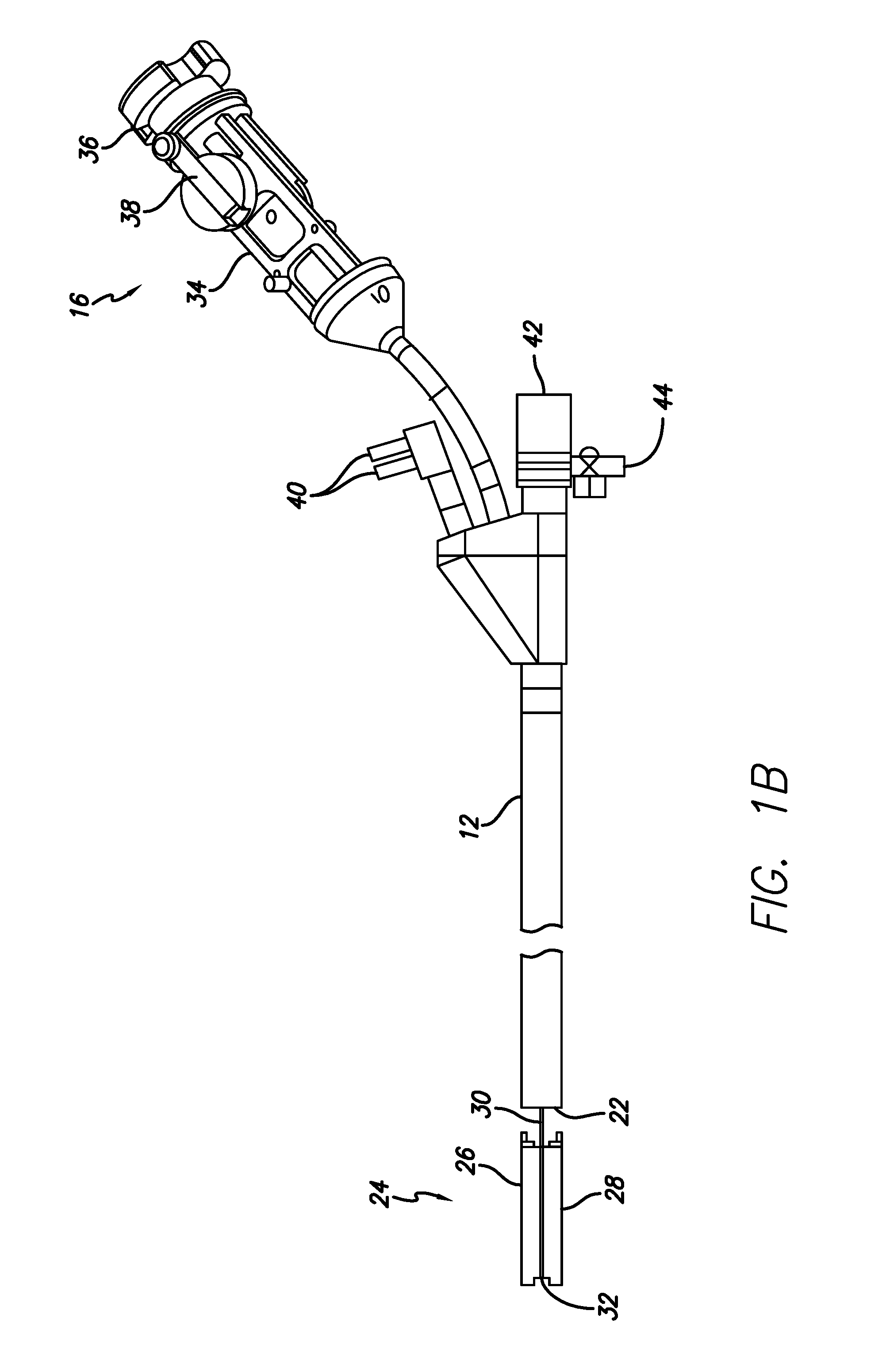Devices and methods for placement of partitions within a hollow body organ
a technology of hollow body organs and partitions, applied in the field of medical devices and methods, can solve problems such as manipulation of acquired tissue, and achieve the effect of facilitating tissue acquisition and minimizing or eliminating cross acquisition
- Summary
- Abstract
- Description
- Claims
- Application Information
AI Technical Summary
Benefits of technology
Problems solved by technology
Method used
Image
Examples
Embodiment Construction
[0055]Gastroplasty devices for tissue acquisition and fixation, and methods of using them are described. In general, the gastroplasty devices described herein may be utilized for creating a partition within a hollow body organ, such as the stomach, esophageal junction, and / or other portions of the gastrointestinal tract. The gastroplasty devices may be advanced within a body through a variety of methods, e.g., transorally, transanally, endoscopically, percutaneously, etc., to create one or several divisions or plications within the hollow body organ, e.g., to create a gastric lumen within the stomach. Further, the gastroplasty devices may be assisted through the use of laparoscopic guidance, in particular, visualization of the external surface of the hollow body organ to assist in placement of the device, or within the organ cavity to monitor the procedure. Similarly, the devices of the present invention may be used in conjunction with other laparoscopic procedures, or may further b...
PUM
| Property | Measurement | Unit |
|---|---|---|
| volume | aaaaa | aaaaa |
| vacuum | aaaaa | aaaaa |
| bioabsorbable | aaaaa | aaaaa |
Abstract
Description
Claims
Application Information
 Login to View More
Login to View More - R&D
- Intellectual Property
- Life Sciences
- Materials
- Tech Scout
- Unparalleled Data Quality
- Higher Quality Content
- 60% Fewer Hallucinations
Browse by: Latest US Patents, China's latest patents, Technical Efficacy Thesaurus, Application Domain, Technology Topic, Popular Technical Reports.
© 2025 PatSnap. All rights reserved.Legal|Privacy policy|Modern Slavery Act Transparency Statement|Sitemap|About US| Contact US: help@patsnap.com



